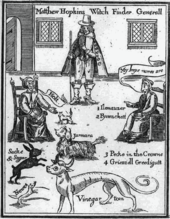Witchcraft, as most commonly understood in both historical and present-day communities, is the use of alleged supernatural powers of magic. A witch is a practitioner of witchcraft. Traditionally, "witchcraft" means the use of magic or supernatural powers to inflict harm or misfortune on others, and this remains the most common and widespread meaning. According to Encyclopedia Britannica, "Witchcraft thus defined exists more in the imagination of contemporaries than in any objective reality. Yet this stereotype has a long history and has constituted for many cultures a viable explanation of evil in the world". The belief in witchcraft has been found in a great number of societies worldwide. Anthropologists have applied the English term "witchcraft" to similar beliefs in occult practices in many different cultures, and societies that have adopted the English language have often internalised the term.
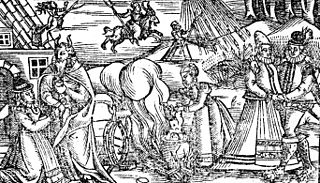
Isobel Gowdie was a Scottish woman who confessed to witchcraft at Auldearn near Nairn during 1662. Scant information is available about her age or life and, although she was probably executed in line with the usual practice, it is uncertain whether this was the case or if she was allowed to return to the obscurity of her former life as a cottar’s wife. Her detailed testimony, apparently achieved without the use of violent torture, provides one of the most comprehensive insights into European witchcraft folklore at the end of the era of witch-hunts.
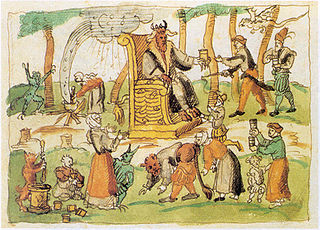
A Witches' Sabbath is a purported gathering of those believed to practice witchcraft and other rituals. The phrase became especially popular in the 20th century.
In Germanic paganism, a seeress is a woman said to have the ability to foretell future events and perform sorcery. They are also referred to with many other names meaning "prophetess", "staff bearer", "wise woman" and "sorceress", and they are frequently called witches or priestesses both in early sources and in modern scholarship. In Norse mythology the seeress is usually referred to as völva or vala.

A witch doctor was originally a type of healer who treated ailments believed to be caused by witchcraft. The term is now more commonly used to refer to healers, particularly in regions which use traditional healing rather than contemporary medicine.
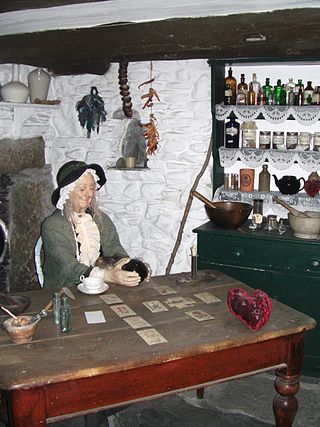
The cunning folk were professional or semi-professional practitioners of magic in Europe from the medieval period through the early 20th century. In Britain they were known by a variety of names in different regions of the country, including wise men and wise women, pellars, wizards, dyn hysbys, and sometimes white witches.

Asian witchcraft encompasses various types of witchcraft practices across Asia. In ancient times, magic played a significant role in societies such as ancient Egypt and Babylonia, as evidenced by historical records. In the Middle East, references to magic can be found in the Torah and the Quran, where witchcraft is condemned due to its association with belief in magic, as it is within other Abrahamic religions.
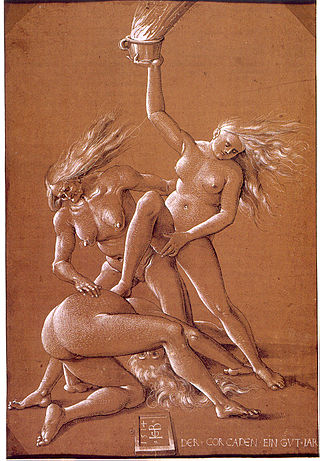
European witchcraft is a multifaceted historical and cultural phenomenon that unfolded over centuries, leaving a mark on the continent's social, religious, and legal landscapes. The roots of European witchcraft trace back to classical antiquity when concepts of magic and religion were closely related, and society closely integrated magic and supernatural beliefs. Ancient Rome, then a pagan society, had laws against harmful magic. In the Middle Ages, accusations of heresy and devil worship grew more prevalent. By the early modern period, major witch hunts began to take place, partly fueled by religious tensions, societal anxieties, and economic upheaval. Witches were often viewed as dangerous sorceresses or sorcerers in a pact with the Devil, capable of causing harm through black magic. A feminist interpretation of the witch trials is that misogynist views of women led to the association of women and malevolent witchcraft.

The Witches of Belvoir were a mother and her two daughters accused of witchcraft in England and the deaths of two young brothers, Henry and Francis Manners, the heirs to Francis Manners, 6th Earl of Rutland, whose seat was at Belvoir Castle. The mother, Joan Flower, died on the way to her trial after apprehension 'around Christmas' of 1618, while Philippa and Margaret were executed by hanging on 11 March 1619.

Witch, from the Old English wiċċe, is a term rooted in European folklore and superstition for a practitioner of witchcraft, magic or sorcery. Traditionally associated with malevolent magic, with those accused of witchcraft being the target of witch-hunts, in the modern era the term has taken on different meanings. In literature, a 'witch' can now simply refer to an alluring women capable of 'bewitching' others. In neopagan religions such as Wicca the term has meanwhile been adopted as the female term for an adherent.
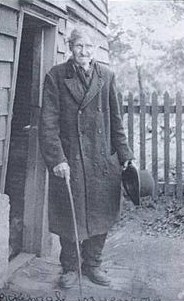
George Pickingill was an English farm labourer who lived and worked in the village of Canewdon in the eastern English county of Essex. Widely considered to be a cunning man, or vocational folk magician, he reportedly employed magical means to offer cures for ailments and to locate lost property, although was also alleged to have threatened to place curses on people.
Ursula Kemp or Ursley Kempe alias Grey was an English cunning woman and midwife who in 1582 was tried for witchcraft and hanged. Kemp was accused of using familiars to kill and bring sickness to her neighbour.

Emma Wilby is a British historian and author specialising in the magical beliefs of Early Modern Britain.

Cunning folk, also known as folk healers or wise folk, were practitioners of folk medicine, helpful folk magic and divination in Europe from the Middle Ages until the 20th century. Their practices were known as the cunning craft. Their services also included thwarting witchcraft. Although some cunning folk were denounced as witches themselves, they made up a minority of those accused, and the common people generally made a distinction between the two. The name 'cunning folk' originally referred to folk-healers and magic-workers in Britain, but the name is now applied as an umbrella term for similar people in other parts of Europe.
The first historian to posit the existence of European shamanic ideas within popular beliefs of otherwise Christian Europeans was Carlo Ginzburg, who examined the Benandanti, an agrarian cult found in Friuli, Italy, whose members underwent shamanic trances in which they believed they battled witches in order to save their crops.
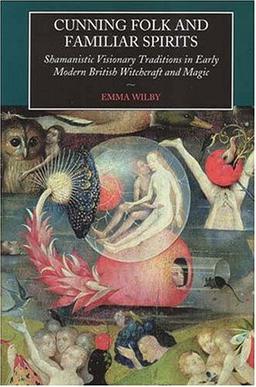
Cunning Folk and Familiar Spirits: Shamanistic Visionary Traditions in Early Modern British Witchcraft and Magic is a study of the beliefs regarding witchcraft and magic in Early Modern Britain written by the British historian Emma Wilby. First published by Sussex Academic Press in 2003, the book presented Wilby's theory that the beliefs regarding familiar spirits found among magical practitioners – both benevolent cunning folk and malevolent witches – reflected evidence for a general folk belief in these beings, which stemmed from a pre-Christian visionary tradition.

Between the Living and the Dead: A Perspective on Witches and Seers in the Early Modern Age is a study of the beliefs regarding witchcraft and magic in Early Modern Hungary written by the Hungarian historian Éva Pócs. The study was first published in Hungarian in 1997 as Élők és holtak, látók és boszorkányok by Akadémiai Kiadó. In 1999, it was later translated into English by Szilvia Rédey and Michael Webb and published by the Central European University Press.
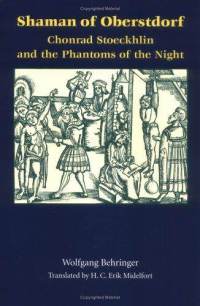
Shaman of Oberstdorf: Chonrad Stoeckhlin and the Phantoms of the Night is a study of the arrest and trial of Chonrad Stoecklin (1549–1587), a German herdsman from the town of Oberstdorf who was accused and executed for the crime of witchcraft after experiencing a series of visions. Written by the German historian Wolfgang Behringer, himself a specialist in the Early Modern witch trials of Germany, Shaman of Oberstdorf was initially published in German as Chonrad Stoekhlin und die Nachtschar: Eine Geschichte aus der frühen Neuzeit by R. Piper GmbH & Co. in 1994. It was subsequently translated into English by H.C. Erik Midelfort and published in 1998 by the University of Virginia Press.

Ecstasies: Deciphering the Witches' Sabbath is a study of visionary traditions in Early Modern Europe written by the Italian historian Carlo Ginzburg. First published by Giulio Einaudi in 1989 under the Italian title Storia notturna: Una decifrazione del Sabba, it was later translated into English by Raymond Rosenthal and published by Hutchinson Radius in 1990.

Elspeth Reoch was an alleged Scottish witch. She was born in Caithness but as a child spent time with relatives on an island in Lochaber prior to travelling to the mainland of Orkney.


